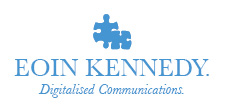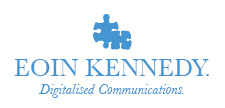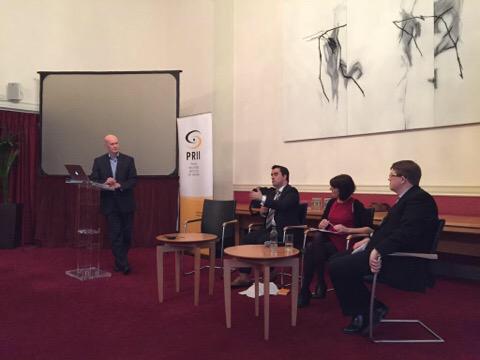Will Data Kill the PR Star.
Last week I chaired a low key session with the PRII on the topic of Data Driven Journalism that ended on a more positive note than I had expected. Some very pragmatic pointers from the session and although its not quite revolution it’s a trend that is sure to continue, at an accelerated speed.
Data analysis has always been a key driver in the media but in 2009 when the Washington Post let award winning journalist Dan Froomkin go, supposedly because of low website views, I often think that the die was cast for its future central role.
Since then we have seen an incredible explosion in the amount of data being shared. We have witnessed articles written by algorithms and algorithms that decide what news we get to see and don’t. It was only time before these started to impact on the PR/Journalist relationship.
In one way data and data crunching is nothing new to the PR industry. We became experts in the survey release, punchy statistics and more recently generating eye catching infographics. Whats different is the speed, volume, scale, availability of open data and the variety of tools that are available which brings up important areas like skillsets and training for the industry.
When you gloomily look at this area logic would say we are also not far from PR pitches being potentially decided by data crunching algorithms – based on past and projected viewership, which is a scary prospect.
The three speakers on day gave a really deep dive in their allocated 10 minutes so I have tried to capture some of what they covered. The speakers were:
Cyril Moloney, a Senior Account Director at PSG Plus specialising in online and tech PR.
Pamela Duncan, who is one of the main contributors to the Irish Times’ data-driven journalism initiative;
Dermot Casey, a director at Near Future and a Storyful pioneer;
First up was Cyril Moloney who helped to put these developments into context and also some steps the industry should take.
His takeaways.
- “Don’t believe algorithms and data scientists will replace PRs/journalists, but we (PR) need to evolve (the human element/story context and the ability to tell a good story will only be enhanced by data journalism)”
- “More the change – more the same – PR and data stories (indexes, consumer surveys), but we need to evolve beyond short term use of these tactics”
- “PR measurements need to reflect digital and we as an industry need to better implement the Barcelona Principles of measurement for clients”
- “However PR needs to evolve as data journalism will change the playing field in terms of story pitching and news (in some respects, mirror a digital newsroom)”
- “Great opportunity for PR to use data journalism techniques to create better stories”
- “Agree standards and processes and share data sets with the media (to avoid the “my data scientist is better than your data scientist” scenario) – a big risk, but potentially big gain for transparency and trust (can’t be about your Google analytics alone)”
- “Great role for citizen data journalists /data scientist PRs to spot trends and issues for clients”
- “PR training will have to evolve to incorporate data collation, clean, analyse and report”
- “Transition will be a challenge (traditional PR still here/and clients may have to lead with their chin and consider digital not just print – but better data and measurement is the reward). Clients may resist this as a ‘fad’, and push back”
He was followed by Pamela Duncan from the Irish Times Data Division @irishtimesdata which launched a few weeks ago and has been producing some interesting infographics, visualisations and data driven stories. She gave some fascinating insights into how this all works in the Irish times, the type of stories, the tools you use and some useful pointers on how the PR industry can help especially in terms of type data you look for.
The main tools used are Excel and also Datawrapper amongst a few other specialist tools but spreadsheets are the first thing she opens up every morning.
Some takeaway quotes.
- “Data journalism is worthwhile: it’s not a fad, it’s not something that is going away because more and more data is becoming available all the time and the tools to tell the story are also on the increase. “
- “We are interested in data journalism because there are some seriously good, important and worthwhile stories in the available data and it’s always been the job of journalists to dig them out”
- “I think there are benefits to both PR practitioners and journalists if they can include interesting data sets with reports/surveys etc: if I get a dataset and the data is interesting enough to warrant a graphic or interactive map then the story either gets more space in the paper or more traction online: so there’s an advantage for all sides.”
- “PR practitioners are already providing data: it’s in the body of the report or in indices in the back pages. But if I have that data in accessible format – we’re talking Excel here, nothing scary – then I can easily examine and make graphics or interactives using that data if it warrants it. If it’s in a non-readable PDF it’s much harder sell.”
- “That said I wouldn’t encourage PR people to take huge time over building graphs and maps because, chances are newsrooms are going to have to recreate them using the programmes and software that’s compatible with their systems”
- “But quality of the data is paramount: if you are going to give me a report and a data set attached to it I need to be able to rely on it. So there is, I suppose an argument for PR people to be trained in some data journalism skills – again an Excel course would probably suffice for most.”
My takeaway from Pamela was that interpretative content like press releases and summary reports gives useful guidance but the raw data is where she her own unique angles from. Gone are the day of surveys of 10 people and hiding certain things in reports if the full data set is issued.
Finally Dermot Casey from Near Future gave a good overview of what is happening internationally, how data driven reporting is driving change and how data compiling was handled and evolved in Storyful.
- “Lost of investigative journalism is data journalism in slow motion.”
- “The inverted hierarchy is Compile / Clean / Context / Combine / Communicate”
- “The local is global. The Trichet Letters from EU to Ireland was a Data Journalism story over a very small Data point.”
- “Los Vegas Sun looked at 2.9 million hospital records and found 300 preventable deaths from analysing the data. Nevada brought in six pieces of legislation on the back of it.”
- “In Storyful debunking is as important as finding information. Is it true. Is it real. Can you prove it.”
- “”We found some of the key background information by Anders Behring Breivik the Norwegian gunman. We curated the information in real time and then dug into his background and found his manifesto. It was designed to be found but not to be too easy to find.”
- “With Syria we’re watching a war where both sides are documenting their war crimes in real time. And Storyful has worked with YouTube to preserve important video. But sometimes videos are fake so how do you know its true. Is there really a shark on the New York Stock Exchange (but there are tweets and video). Those Tornado photos from New York, they’re 1973 not yesterday.”
- “The Google Truth project is interesting in this context as soon when you google for Measles you won’t get any information on anti-vaxxers. They’re rolling that softly through other areas, so what does that mean for journalism and for PR people and are Facebook doing something similar. In many cases 90% of traffic to sites is coming from Facebook and from Google.”
- “Algorithms are already deciding what’s important (AP publish 3,000 stories per quarter written by Robots).”
- “Role of the tools is as an Exo-skeleton helping Journalists sift through 90% of the rubbish so they can focus on the 10% of value – Storyful has built a suite of tools to do just that. Other people are doing it as well.”
With about 70 people in attendance the response from the floor was slightly muted. Jacqueline Hall enquired about the state or readiness and future training requirements. Cyril Moloney felt the industry was around a 2 on scale of 1-5 while Pamela Duncan felt that even improving basic spreadsheet skills could help a lot and Dermot Casey has some ideas about a data driven journalism course.
Sinead Whooley questioned how new all this was. Data has always been central but agreed that the tools gave new scale and importance. She also tackled the elephant in the room about the reluctance for open sharing of data by some PR practitioners. This reluctance is frequently due more to massaging figures and controling the message – a topic that arises a lot in the PR/Journalist relationship.
Although there were clear opportunities highlighted during the session there was a overall sense of pessimism about the future of PR but Padraig McKeon finished on a very positive note of the industry ‘lifting up its head’ and that the real future lies with those who control information.
PR’s has an natural affinity to this role but the potential to be left behind or overtaken by others who embrace the tools and technology is, in my opinion, very real.
However my gut feel is glass half full for an industry populated with some great minds.
Keith Bohanna from Near Future live streamed much of the session using Meerkat.




No comments